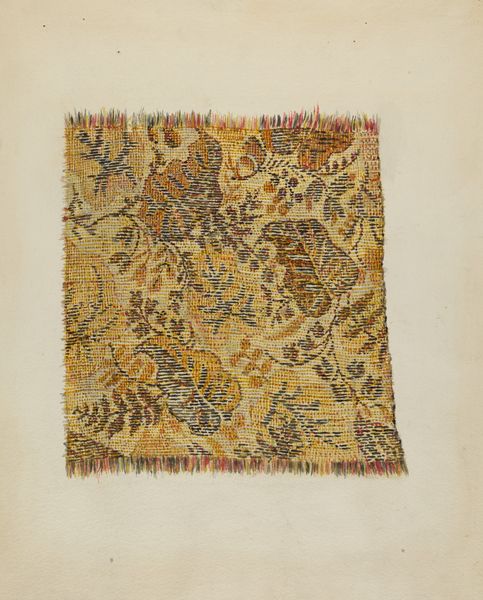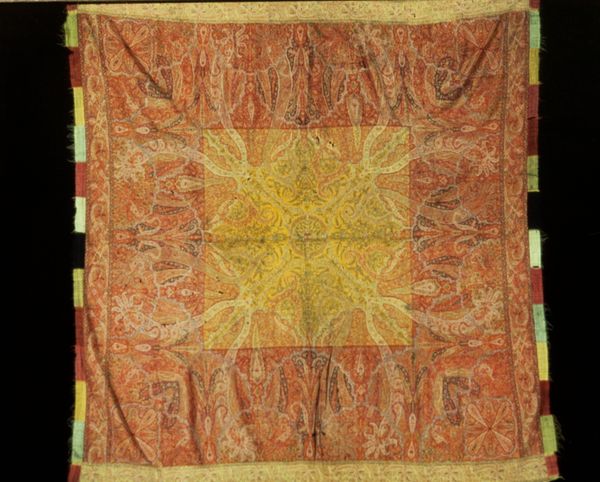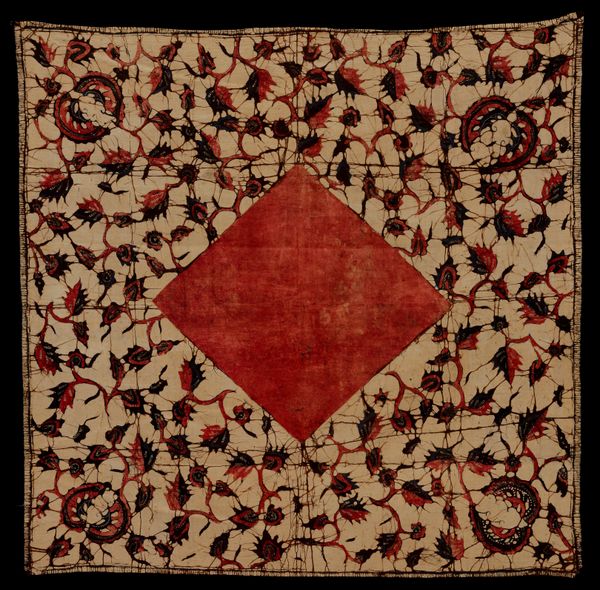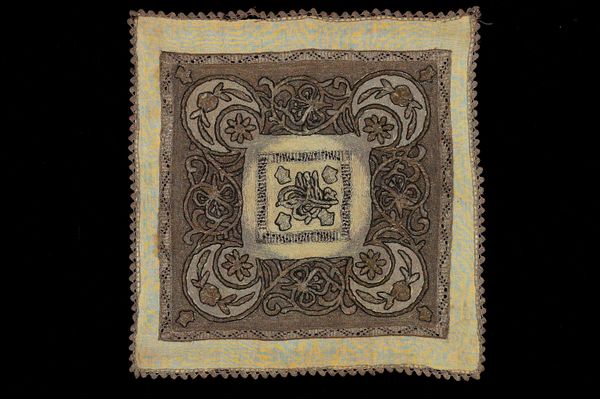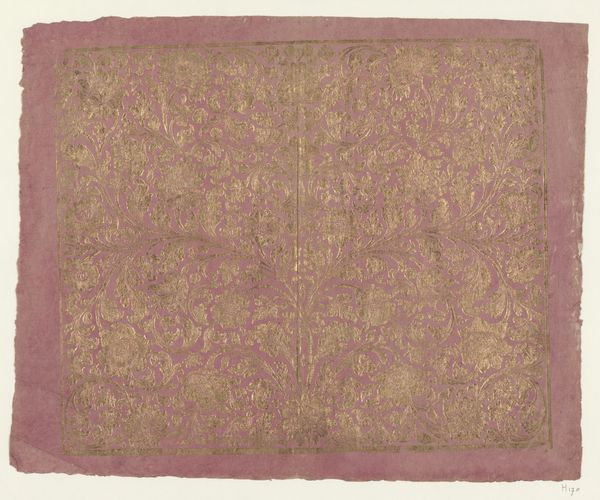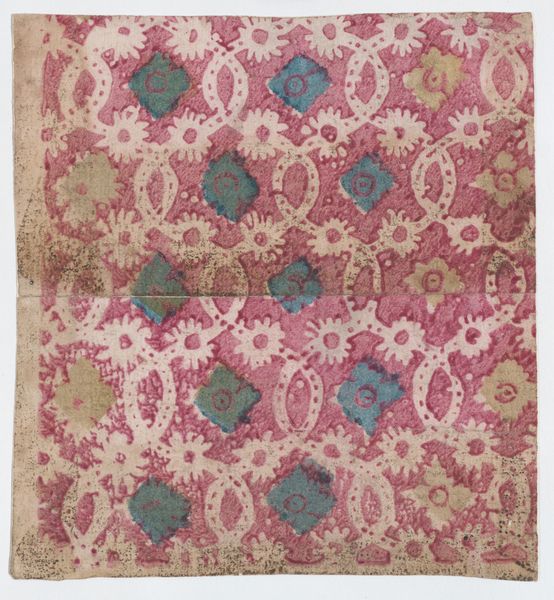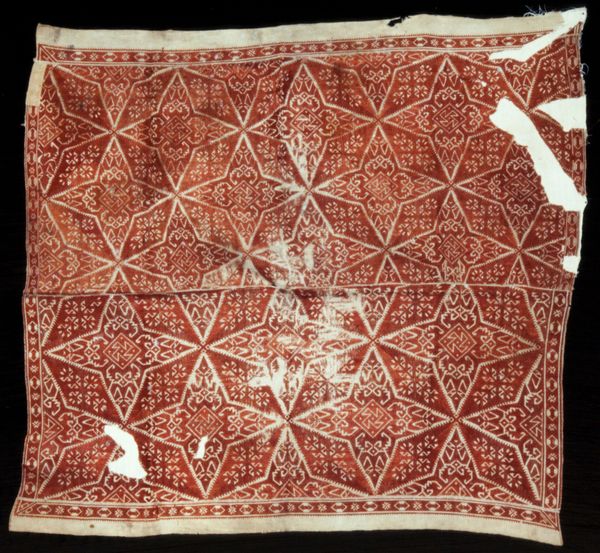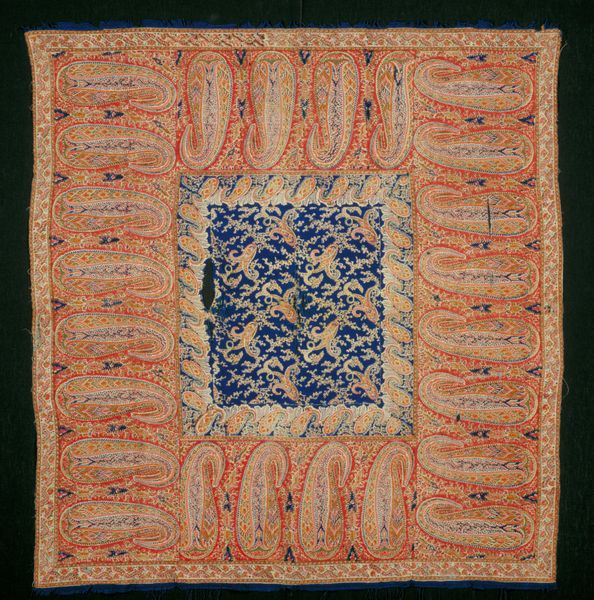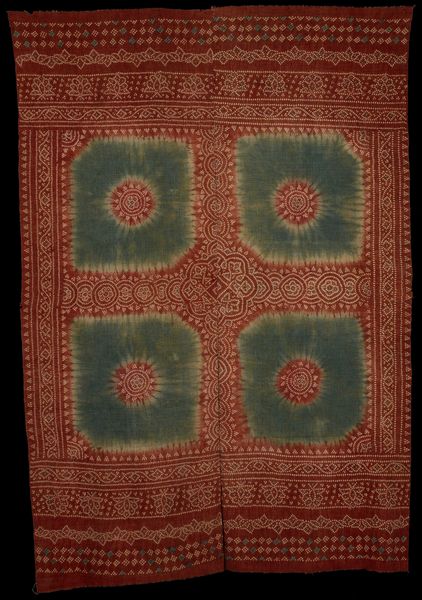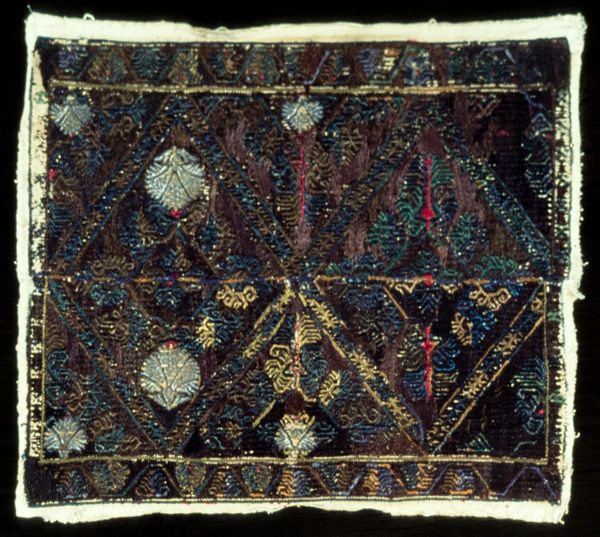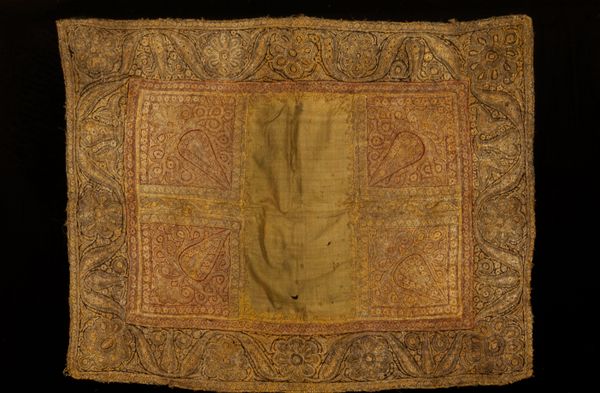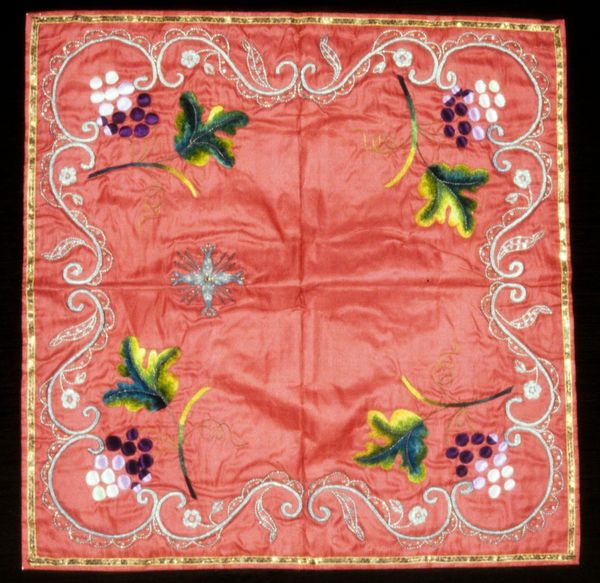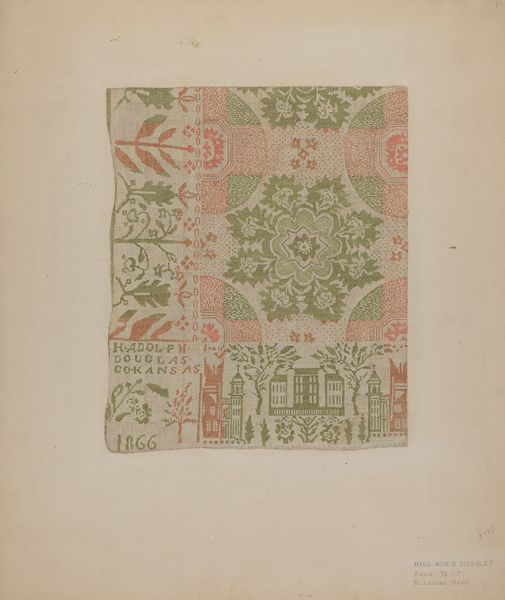
silk, weaving, textile
#
silk
#
pattern
#
weaving
#
textile
#
islamic-art
#
decorative-art
Dimensions: 68 x 70 in. (172.72 x 177.8 cm)
Copyright: Public Domain
This is a Pulchari, or veil, made anonymously, likely in India, using embroidery on cotton. The material qualities here speak volumes. Notice the tightly packed stitches, building up stylized botanical patterns and paisley motifs, giving a rich and sensuous texture to the cloth. This wasn't just about decoration; it was about transforming an everyday material, cotton, into a precious object. The patient, skilled labour involved is evident. Consider the social context: Pulcharis like this were often part of a woman’s dowry, representing not just personal wealth but also the skill and artistry of the maker, probably a woman, and her family. Textiles like this existed within complex economies of production, trade, and consumption, tying together local craft traditions with global markets. Thinking about the Pulchari in this way – as a convergence of material, making, and social context – helps us move beyond simply admiring its beauty. We begin to understand its deeper cultural significance, challenging the traditional divide between art and craft.
Comments
No comments
Be the first to comment and join the conversation on the ultimate creative platform.
